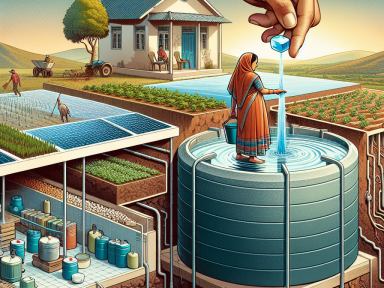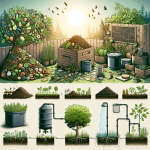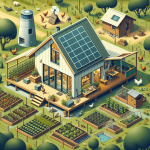Why Water Management is Critical
Imagine this scenario: There’s a major disruption in your local water supply. It could be due to a catastrophic event, deliberate contamination, or a prolonged drought. No matter the cause, you find yourself without a sustainable source of clean water. Pretty terrifying, isn’t it?
Water is life. It’s a fundamental resource that no one can go without for long. That’s why, as a devoted homesteader and practitioner of self-reliance, understanding water harvesting and management is not just beneficial, it’s absolutely vital.
The Basics of Water Harvesting
So, where do we begin? Let’s start from the ground up: water harvesting. The concept of water harvesting is simple. It involves collecting and storing rainwater or surface runoff for later use.
- Rainwater Harvesting: This is as straightforward as placing a bucket under your roof gutter downspout during a rainfall. The collected rainwater is often used for irrigation or watering livestock. With proper treatment, it can even be used for drinking and cooking.
- Surface Runoff Harvesting: Larger-scale than rainwater harvesting, this method involves devising mechanisms to collect runoff from overland flow. This water is typically used for recharging groundwater by allowing it to soak back into the soil, or for flood control.
How to Store Gathered Water
Once you’ve successfully harvested water, the next crucial step is storage. Harvested water can be stored either in tanks above or below ground, or distributed through a piping system for immediate use.
Considerations for Water Storage
- Material and Durability: The material of your water tank should be durable, cleanable and resistant to wear and aging. Concrete, fiberglass and food-grade plastic tanks are common choices.
- Size and Location: The size of your water storage will depend on your water needs and the space availability. Locations for underground tanks should be chosen to avoid sources of pollution.
Importance of Water Treatment
Last but not least, you need to treat your harvested water to make it safe for use, especially if you intend to use it for drinking. Untreated water may contain harmful contaminants or bacteria. Methods of treating your water include boiling, the use of iodine tablets, filtration systems, or ultraviolet lanterns.
Conclusion
Water scarcity is not a distant disaster movie scenario. It’s a real threat – consider recent instances of droughts in California or water crises in Flint, Michigan. As the old saying goes, it’s better to be safe than sorry. Start implementing a water harvesting and management plan today and secure your survival for tomorrow.




GIPHY App Key not set. Please check settings